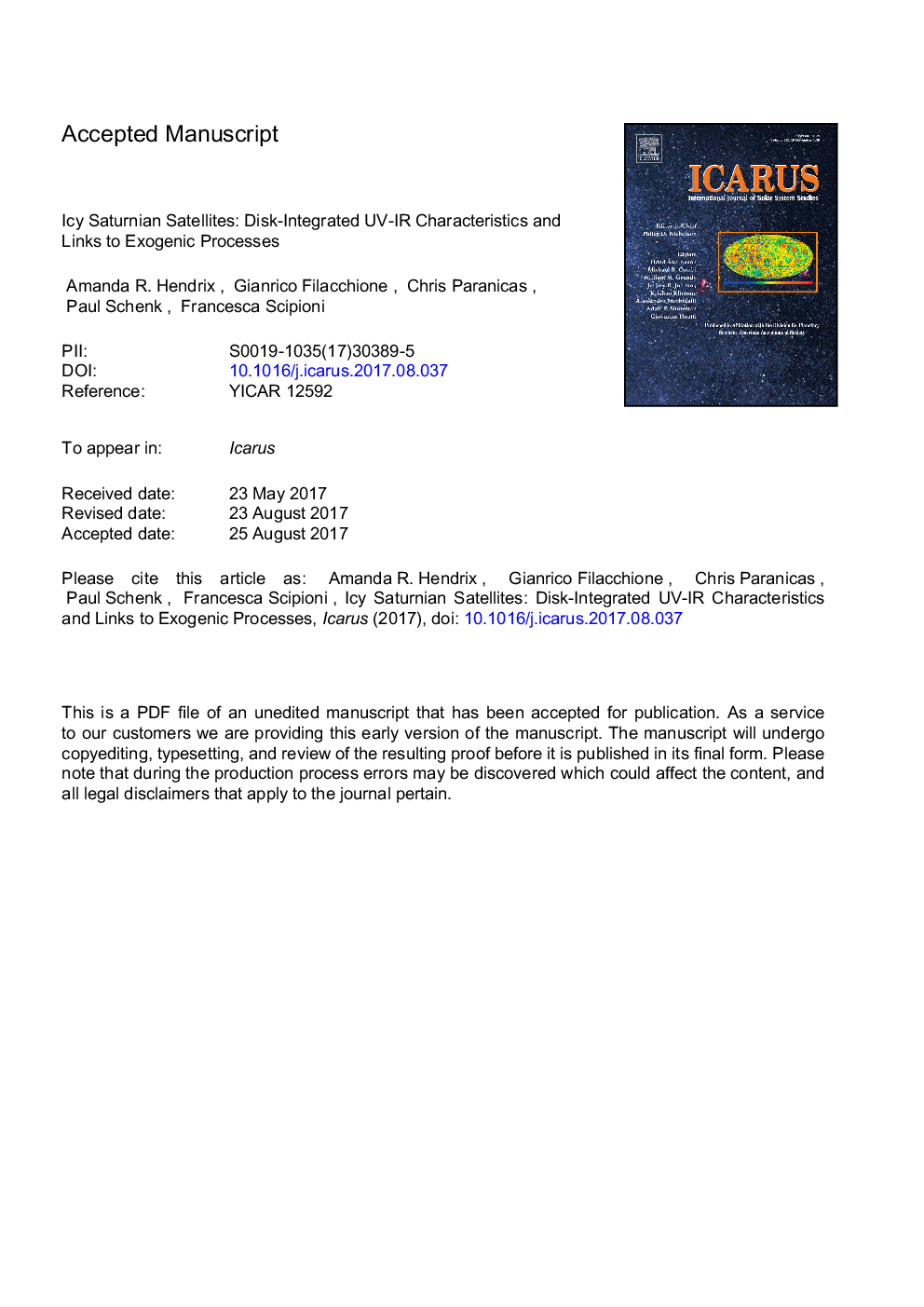| Article ID | Journal | Published Year | Pages | File Type |
|---|---|---|---|---|
| 5486939 | Icarus | 2018 | 42 Pages |
Abstract
Combined Cassini observations obtained at similar observing geometries in the ultraviolet through infrared spectral range, along with additional ultraviolet (UV) data from Hubble Space Telescope where available, are used to study system-wide trends in spectral albedos of the inner icy Saturnian satellites (Mimas, Enceladus, Tethys, Dione, Rhea). We derive UV and visible geometric albedos and UV absorption strengths of the leading and trailing hemispheres and compare with E ring grain flux and charged particle intensities (electrons and ions of varying energies) to those hemispheres. We find that the UV absorption strength on the leading and trailing hemispheres is anti-correlated with E ring grain flux. On the trailing hemispheres, the UV absorption strength is correlated with intensity of electrons in the tens of keV range. We suggest that these relationships could imply links with the organic component of the E ring. Radiolytic processing of organics causes the products to become spectrally redder, increasing the UV absorption strength. Such processing occurs while organic-rich grains are in the E ring, and increases with exposure time in the E ring, such that grains interacting with Rhea are redder (more processed) than those impacting moons closer to Enceladus. Further processing (and associated darkening/reddening) occurs on the trailing hemispheres of the satellites, via radiolysis by electrons in the tens of keV range. Silicates and salts also redden with weathering; however because organics are present in the E ring in significantly greater abundance than salts or silicates, we suggest here that weathering of organics dominates the coloring of the inner Saturnian moons.
Related Topics
Physical Sciences and Engineering
Earth and Planetary Sciences
Space and Planetary Science
Authors
Amanda R. Hendrix, Gianrico Filacchione, Chris Paranicas, Paul Schenk, Francesca Scipioni,
